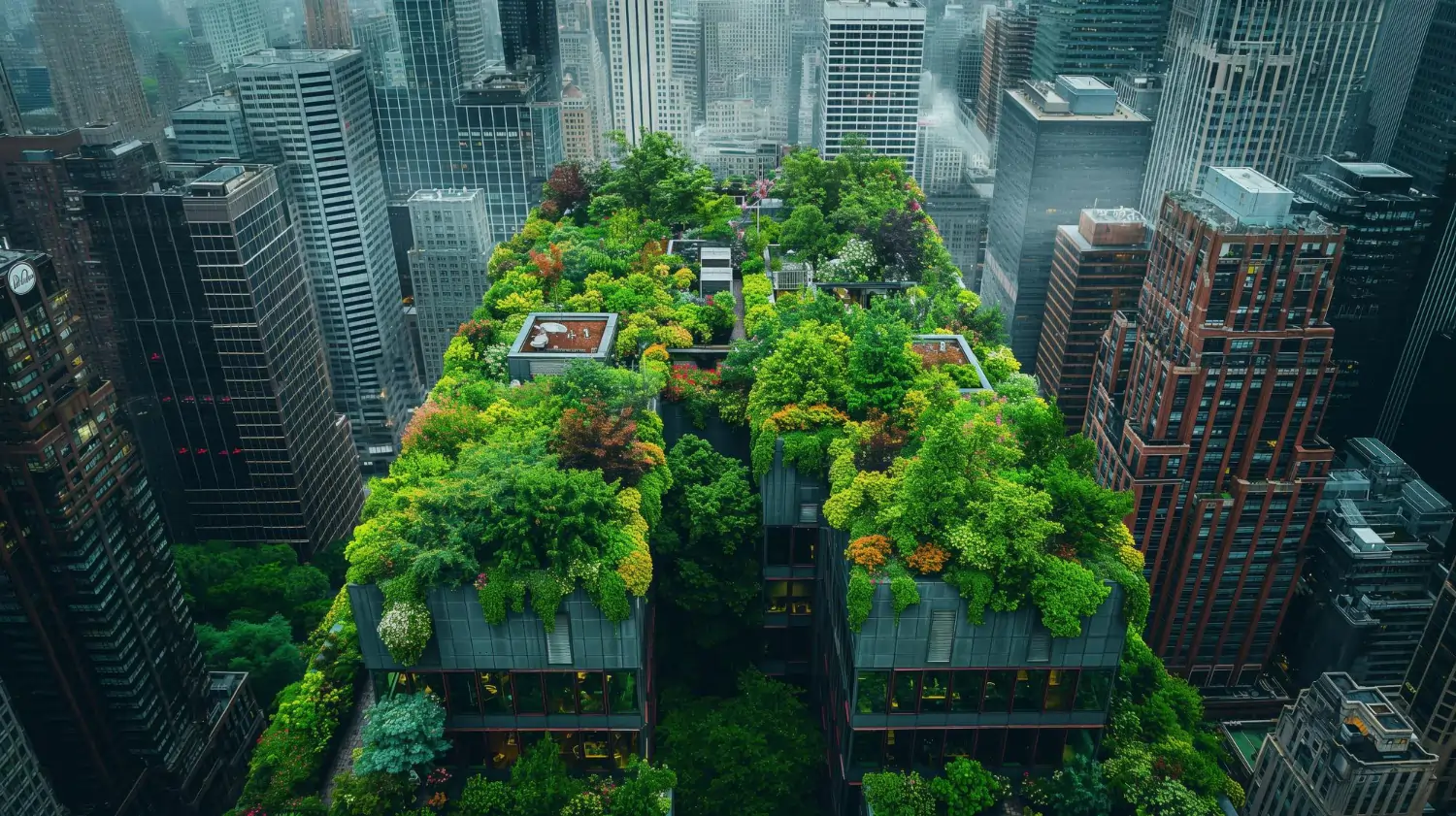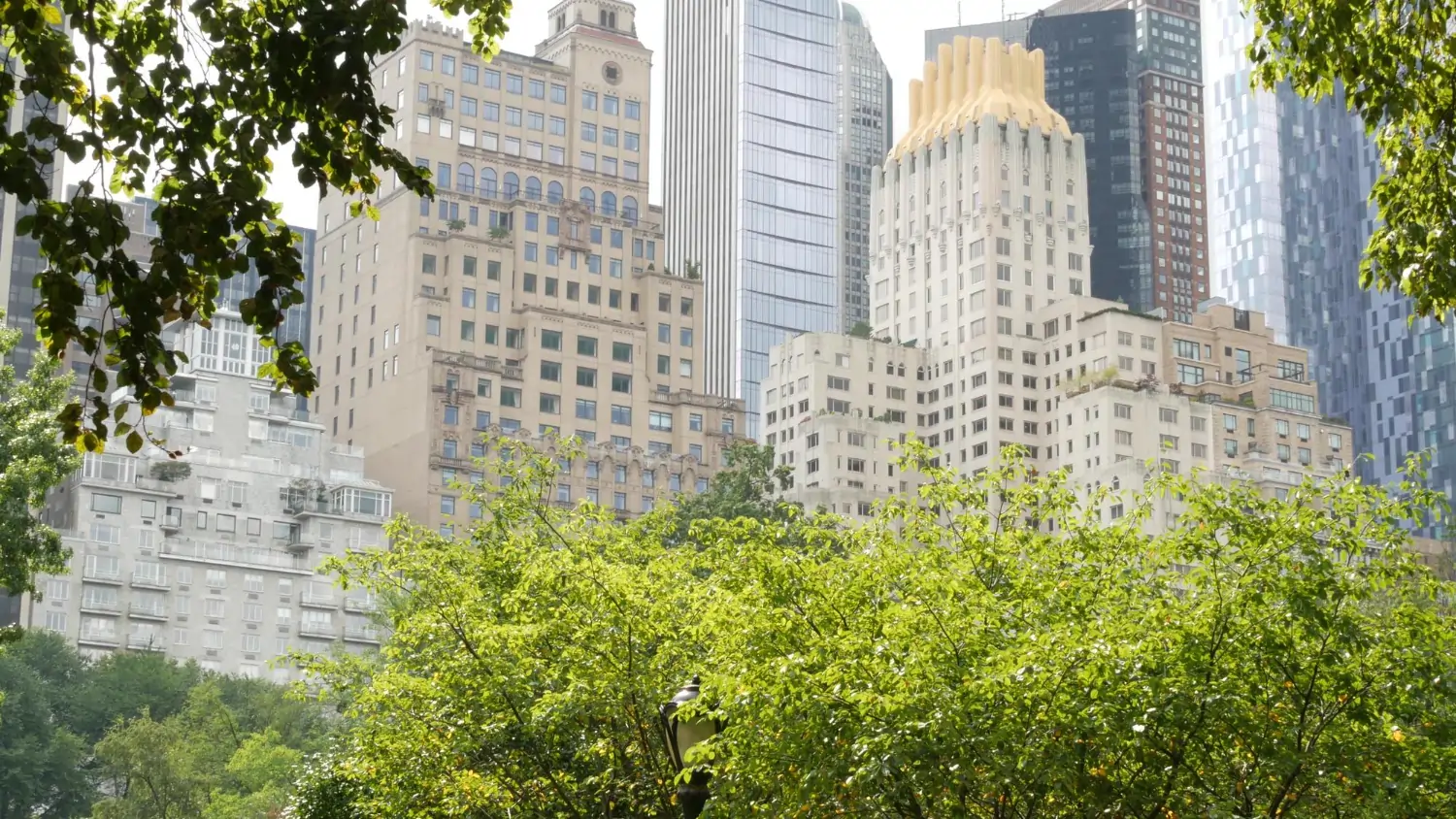Lorem ipsum adipiscing purus fermentum. Praesent vitae quam sed...


The New York real estate industry is quickly adopting several measures for a sustainable future. With the aim of saving on energy expenses and complying with the regulations, improving eco-friendliness has become necessary. When it comes to sustainable real estate, carbon reductions for major buildings enforced under Local Law 97 and Article 321 have become a necessity that needs to be followed. But how exactly are these practices driving efficiency and sustainability and benefiting the environment?
Keep reading to learn about the five ways green properties are driving energy efficiency and sustainability and saving property owners money by implementing energy-efficient real estate strategies.
Smart architectural design for green real estate minimizes energy consumption, a step towards energy efficiency. Features like passive solar heating, advanced insulation, and energy-efficient windows minimize the need for energy. The structures are then developed with these sustainable building practices so that less heating, cooling, and lighting will be needed.
These upgrades also ensure real estate sustainability benefits such as enhanced property value and tenant satisfaction. In New York, Local Law 97 establishes some strict carbon-reduction standards; Article 321 guides how property owners can embrace ecologically friendly property solutions such as energy-efficient design.
Installation of renewable energy systems is one of the most widely used strategies for achieving efficiency and sustainability in real estate. Solar panels, geothermal systems, or even wind turbines allow properties to develop clean energy independent of fossil fuels. Such a system is then pivotal to sustainable building practices in accordance with New York's carbon goals.
Since renewable energy is being used, the properties have considerable savings. The systems also facilitate reduced operational costs and lower environmental impact. Renewable energy is facilitated by Local Law 97 through Article 321, which helps property owners meet emission reduction targets while enhancing long-term building performance.
To achieve energy efficiency, high-productivity HVAC systems, LED lighting, and Energy Star-certified appliances are necessary.
These technologies ensure minimal energy waste. Improving these systems is a vital practice in green buildings, which combines optimum energy consumption with reducing negative environmental impact.
Investing in such systems ensures continuous green property energy savings in terms of utility bills and maintenance expenditures. Eco-sensitive property solutions such as smart thermostats and advanced energy usage monitoring systems ensure that property owners maintain better control over their energy usage levels.
This also helps in tenant retention and compliance with regulations such as Local Law 97, which demands modern, efficiency-oriented infrastructure for properties.
Water conservation is a significant aspect of green real estate, where building practices promote sustainability. The most environmentally friendly property solutions include low-flow fixtures, dual-flush toilets, and rainwater harvesting systems, which help conserve water from waste. Successful water management also supports strategies for energy saving in real estate since less water use leads to less energy usage for heating and distribution.
The benefits of real estate to sustainability are coupled with easing the pressure on municipal water usage and attracting green-conscious tenants to the property. Water and energy-efficient measures supported under Local Law 97 promote New York's buildings to achieve environmental sustainability.
The LEED and WELL certifications approve sustainable building practices. Smart technologies are advanced for better energy management. It helps owners, in the short run, to ensure their property adheres to the highest level of stringent energy-efficient real estate strategies and ensures comfort for the occupants.
These are eco-friendly property solutions where smart systems provide automatic lighting and temperature controls for optimum energy usage.
When implemented, these measures improve a property's high energy-saving potential and promote the use of smart technology in buildings. They further increase real estate property value and tax benefits while complying with the laws in each local region. Local Law 97 and Article 321 incorporate advanced technology for reaching the target reductions of carbon footprints in significant New York buildings.

Local Law 97 is part of the Climate Mobilization Act in New York City. Article 321 is a guide for implementing energy-efficient real estate strategies and sustainable building practices.
These regulations save energy through eco-friendly solutions like renewable energy and high-efficiency systems. Investing in property also ensures compliance with state laws, helping New York meet its climate goals.
Green real estate offers financial as well as environmental benefits.
Green real estate is changing the property landscape of New York, where sustainability becomes a central focus in development. Energy savings come from energy efficiency, sustainable building practices, and eco-conscious property solutions. The benefits of real estate sustainability include improved property value, regulatory compliance, and reduced environmental impact.
Under Local Law 97 and Article 321, large buildings must make energy-efficient upgrades. These practices help New York’s real estate lead in energy efficiency, benefiting both the planet and people.
Lorem ipsum adipiscing purus fermentum. Praesent vitae quam sed...
Lorem ipsum adipiscing purus fermentum. Praesent vitae quam sed...